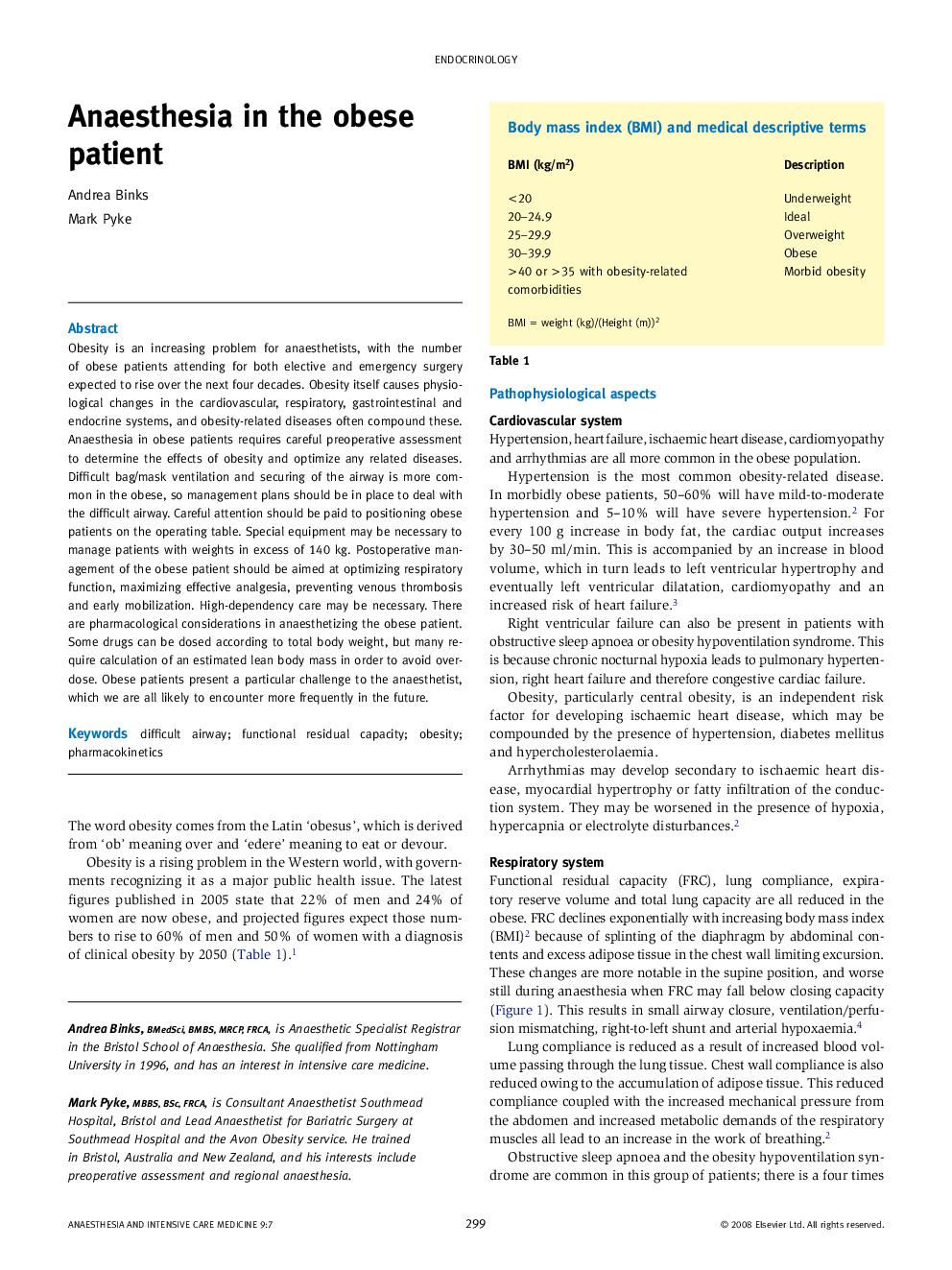| Article ID | Journal | Published Year | Pages | File Type |
|---|---|---|---|---|
| 2743561 | Anaesthesia & Intensive Care Medicine | 2008 | 4 Pages |
Obesity is an increasing problem for anaesthetists, with the number of obese patients attending for both elective and emergency surgery expected to rise over the next four decades. Obesity itself causes physiological changes in the cardiovascular, respiratory, gastrointestinal and endocrine systems, and obesity-related diseases often compound these. Anaesthesia in obese patients requires careful preoperative assessment to determine the effects of obesity and optimize any related diseases. Difficult bag/mask ventilation and securing of the airway is more common in the obese, so management plans should be in place to deal with the difficult airway. Careful attention should be paid to positioning obese patients on the operating table. Special equipment may be necessary to manage patients with weights in excess of 140 kg. Postoperative management of the obese patient should be aimed at optimizing respiratory function, maximizing effective analgesia, preventing venous thrombosis and early mobilization. High-dependency care may be necessary. There are pharmacological considerations in anaesthetizing the obese patient. Some drugs can be dosed according to total body weight, but many require calculation of an estimated lean body mass in order to avoid overdose. Obese patients present a particular challenge to the anaesthetist, which we are all likely to encounter more frequently in the future.
